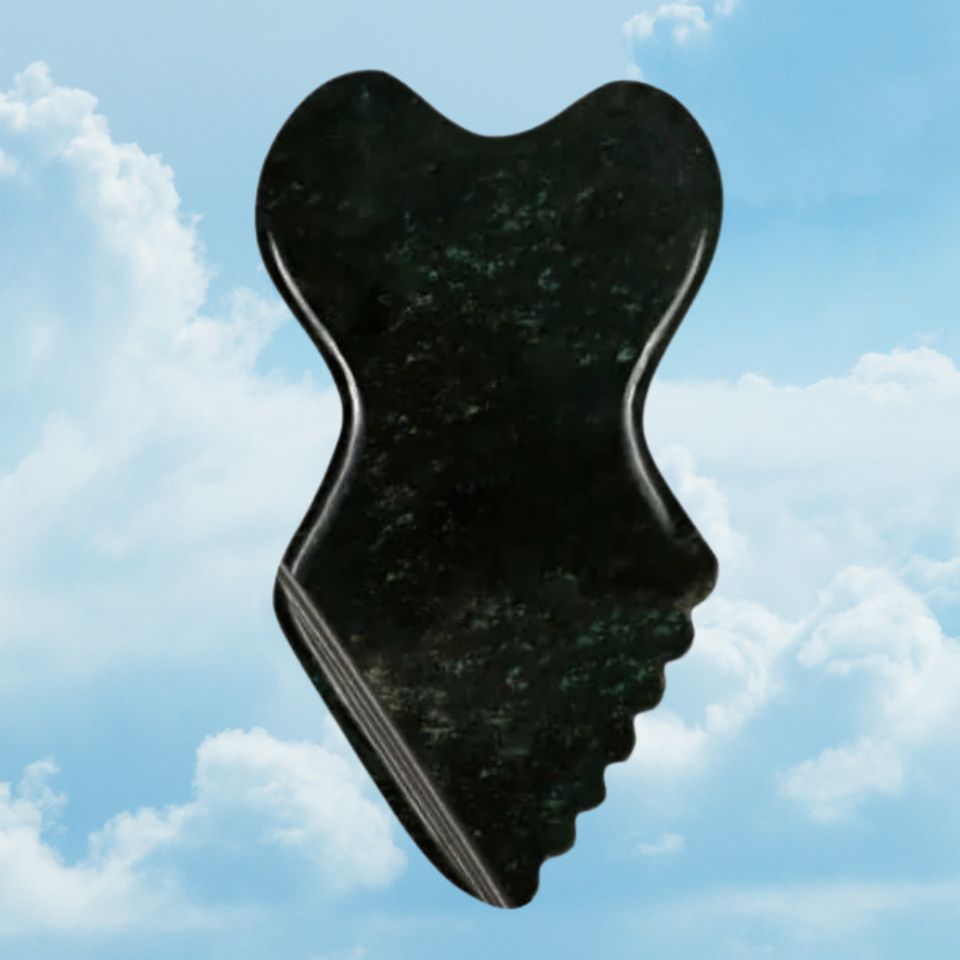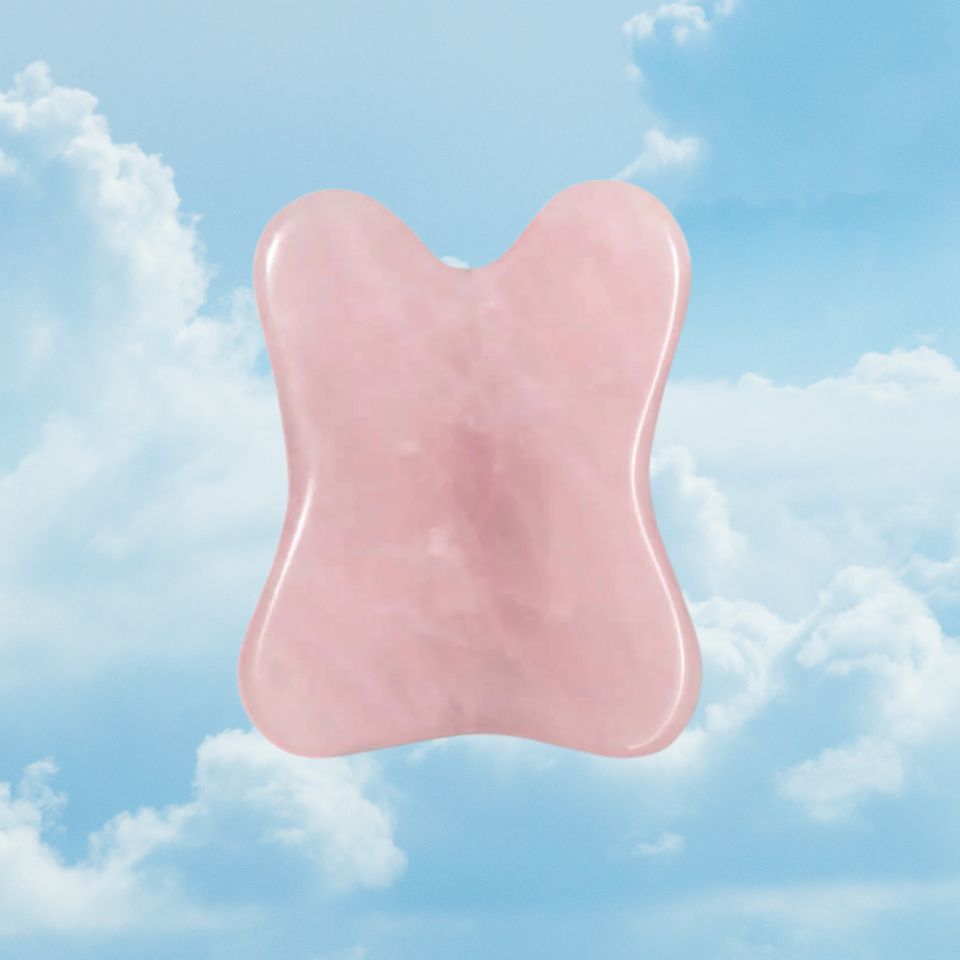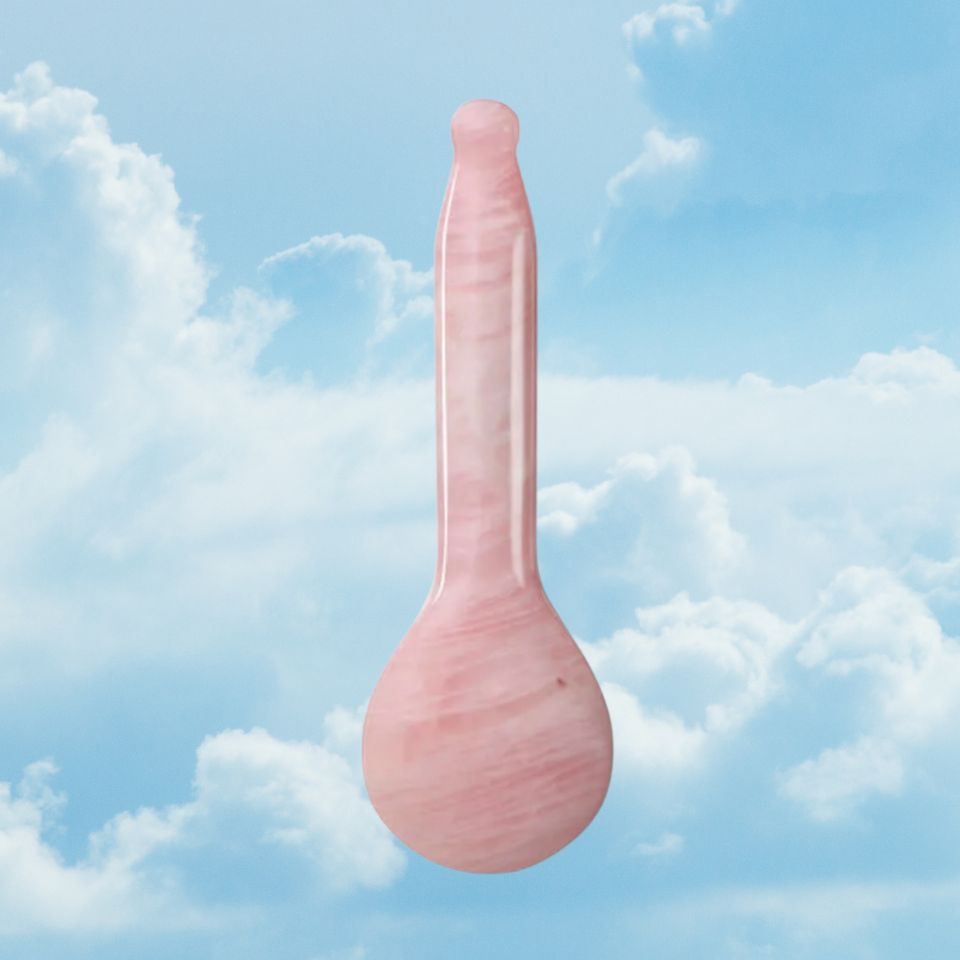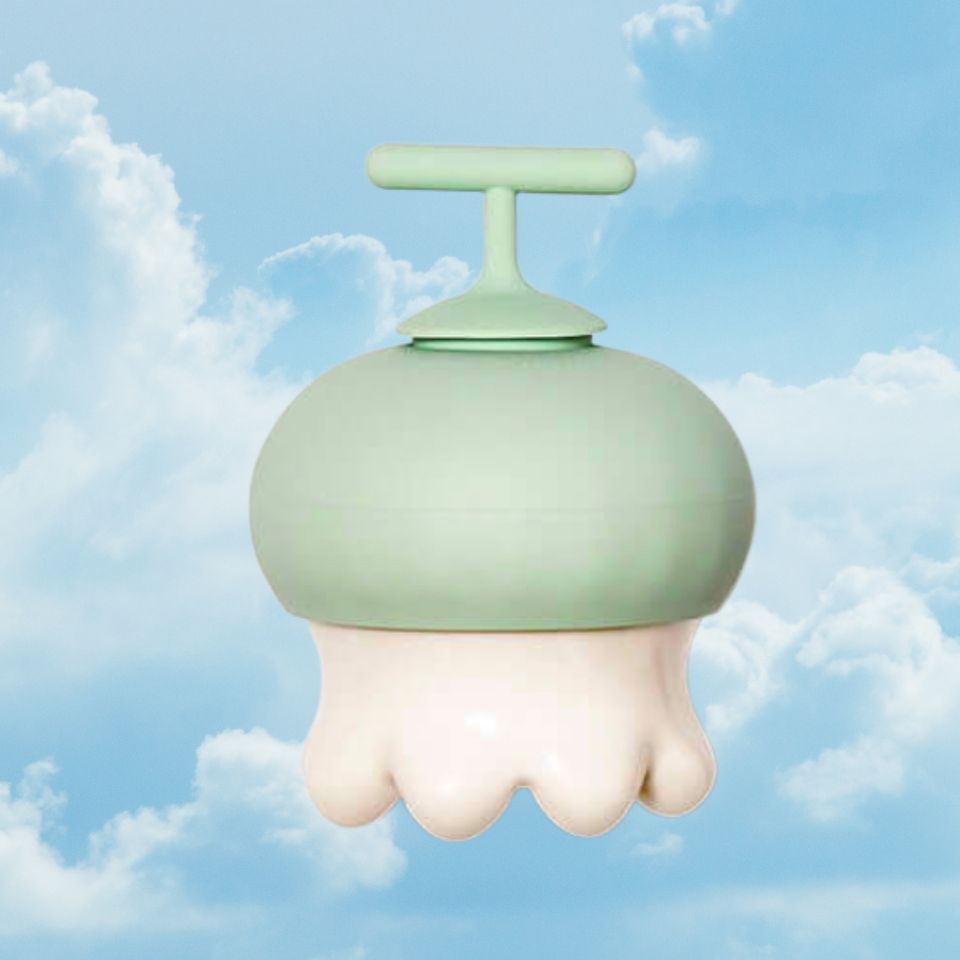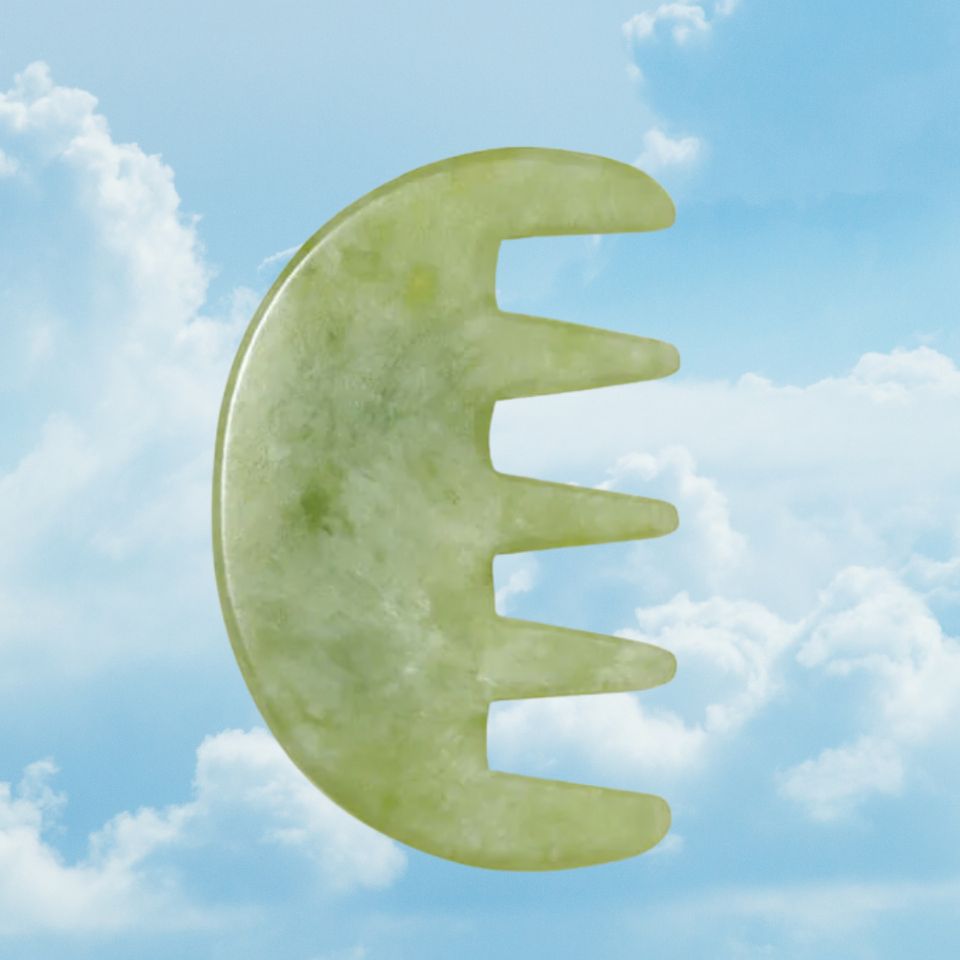In a world with seemingly endless recommendations for ways to improve our skin, gua sha (pronounced gwah-shah) tools are having a moment. They’re smooth, half moon-shaped stones that massage your face, claiming to lift, smooth and even drain. But the practice is nothing new. It actually predates modern medicine and originated in China, where the stones have been used to treat all sorts of ailments by scraping (gua) the skin. Like acupuncture, it is based on the concept of promoting qi (pronounced chee), the balance and flow of our body’s energy.
Facial gua sha claims to give you clear skin, fewer wrinkles and a more sculpted appearance, and many skin care brands now produce a facial gua sha tool to accompany their products. But does it actually do anything? And is it worth our money? We spoke to experts on two sides of the issue: a gua sha practitioner and an aesthetic medical doctor.
Here’s what the gua sha practitioner says
First up is Chinese medicine expert and founder of Hayo’u Method, U.K.-based Katie Brindle, who has researched the subject since 2002 and written a book about it. Brindle is a qualified Five Elements Chinese medical practitioner, having graduated from the U.K.’s Integrated College of Chinese Medicine.

“We consider that beauty is the exterior manifestation of interior health,” Brindle told HuffPost. “This stands to good reason as you never look your best when you are feeling unwell. The idea is, focus on your health and beauty will follow. Shiny hair, a healthy weight, glowing skin ― in Chinese medicine, these are all signs your organs are happy.”
Brindle defines facial gua sha as a simple and gentle technique that will increase circulation and lymphatic flow in your face. The better quality gua sha tools will have been created using jade or rose quartz stone, and shaped without using unnecessary resins. The shape resembles a half moon, which cradles the shape of your face during the massage.
Brindle says that if you’ve ever felt tension on your face, around your jaw or between your brows, gua sha might be the tool you’re missing.
“Using a gua sha tool allows you to work deeper into the muscles and fascia than by using fingers alone, so you can consciously release where you are tight,” Brindle said. “Facial gua sha activates acupressure points along the 12 major meridian lines in your face.”
Brindle also said that East Asian medicine places value in the energy that certain objects carry, and materials like jade and rose quartz are known to carry healing energy.
Here’s what the aesthetic doctor says
Nyla Raja, aesthetic doctor and founder of the U.K.-based aesthetics and medispa clinic called Dr. Nyla Raja, questioned the ability of gua sha to help lessen wrinkles or lift the face. She doesn’t believe the stone can effectively get under the epidermis (surface layer) of the skin and affect the skin’s elastin production.
“Using a jade gua sha tool at home essentially gives your face a mini workout ― you are stimulating blood circulation, which increases the amount of oxygen and nutrients to the skin, which can improve skin health,” Raja said. “However, it is unlikely that the effects of gua sha are able to reach this layer, and so does probably not stimulate or strengthen elastin production.”
Though she has used a gua sha tool herself as part of her routine, she recommends it with some caution: “There is certainly no harm in using it, especially as part of an at-home routine and in between facials and treatments. However, do not expect for a gua sha to solve all of your skin care needs. With all skin care routines, there needs to be consistency but also different elements. Those with deeper lines will not suddenly see their wrinkles disappear because of gua sha and should seek a collagen-boosting treatment such as Ultherapy instead, where the effects can reach deeper into the skin, stimulating collagen production and strengthening elastin.”
Raja’s takeaway is this: Use a gua sha tool as part of your routine to stimulate blood flow, but don’t expect miracles. There are many studies that have shown impressive results, but these are mostly focused on the effects of traditional gua sha practices on the body, not specifically for the face. It certainly relieves tension and can be incorporated into one’s routine as a form of self-care practice. But it’s a personal choice to decide whether to use the tool.
Want to try facial gua sha? Here’s how to do it.
“Gua sha is such a holistic treatment, there is no wrong way to do it,” Brindle said. She recommends using a stone for one minute daily, which is enough to start seeing benefits. But it’s also important to follow your intuition on how much or how little feels good.

It can be used in the morning in the shower or before you go to bed, along with some oil. Based on the energies the stones supposedly carry, Brindle recommends using rose quarts in the morning and jade during the rest of the day and at night.
Press the tool gently all over your neck, face and décolletage.
Gently press and hold the tool under each eye, then over each eye, with the lids shut.
Starting at the neck, press-stroke up to your forehead.
Angling the tool at 45 degrees in the direction that you want to work, use the rounded edge to press-stroke the forehead, cheekbones, then the lips ― about eight sweeps in each direction. Use the double-curved end on your throat and jawline
To clean your gua sha tool, just run it under water. For more techniques, Brindle has various videos on her personal Instagram and the Hayo’u Method account to help you gua sha properly.
Redness on the face or body during treatment may seem scary or a trauma, but it’s believed in Chinese medicine that redness (sha) is the healing response of your body. The amount of sha depends on your skin type and the severity of the treatment.
When to avoid gua sha
Brindles said that people who are undergoing chemotherapy shouldn’t use gua sha 48 hours before or 24 hours after a treatment. Pregnant women should also avoid it unless a professional handles the task, due to the pressure points on the face and body that can trigger uterine contractions in rare circumstances. Some other situations where gua sha isn’t recommended: during menstruation, as it can affect the heaviness of the flow, and on skin with rosacea.
Brindle also said that if you have visible facial veins, the tool needs to be used a different way: “Instead of the ‘press stroke,’ just hold the jade stone over the affected area and allow it to warm up naturally, then turn it over and repeat. Rather than using the rounded edge of the tool, use the flat edge of the jade stone and gently sweep along the contours of the face.”
A gua sha tool still can be used if you have Botox or dermal fillers ― just avoid the treated areas. ”[The tool] can be used on all untreated areas of your face, to even out the difference between the Botox and untreated skin,” Brindle said. “We recommend avoiding the treated area for 28 days after dermal filler treatment and 14 days after Botox. You can continue to use gua sha tools on other areas of your face.”
How to select your tool
Check its weight (it should feel heavy) and feel whether it’s cold ― authentic jade stone will be cool.
Check out a selection of recommended tools below.
HuffPost may receive a share from purchases made via links on this page. Prices and availability subject to change.
Lanshin Chiu spent years designing the Pro tool, and says it's ideal for professionals or those craving professional-level results. "Every curve and shape, every edge of this tool is intentional."
Lanshin Chiu said the "sculpting V" at the top is designed for areas like the jawbone, brow bone and cheekbone to "get a really good hold"; the sides are designed for large curved surfaces; and the edges — "I call it the sculpting lip and the comb" — are important for improving the look and shape of skin.
"It's just a more simple shape, also very effective for gua sha," said Lanshin Chiu. "It will get the job done."
When addressing cosmetic concerns, she said, she uses the spoon for "detail work around the eyes, nose and lips because these are smaller areas with smaller little muscles that that pen tip really can drive into in a way that's very comfortable, [it's] soft and round. The spoon tip I use... to smooth everything over in a big broad stroke. Plus, the spoon tip can kind of give you more precise shaping or sculpting."
With no batteries or chargers needed, this manual massager has a crushed tourmaline crystal glaze and can be simply filled with hot water to produce heat.
"Tourmaline is one of a few types of stone that when you heat it, the type of energy that it admits is actually far-infrared," she said. "FIR heat means that it penetrates deeper to affect circulation in a more effective way. And it lasts a while, like 20 to 30 minutes."
"When you're really trying to get a strength of stimulation to boost up blood flow, I like to use a tool because of that hard contact that it gives you."
